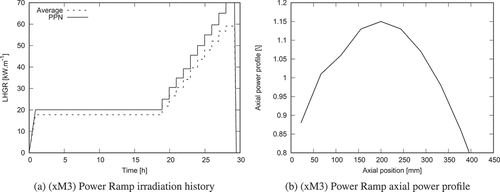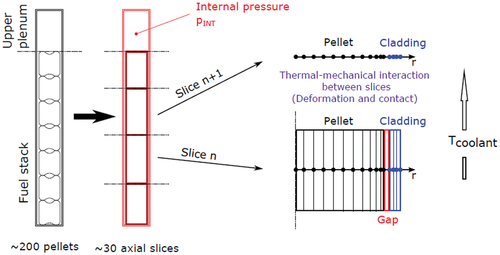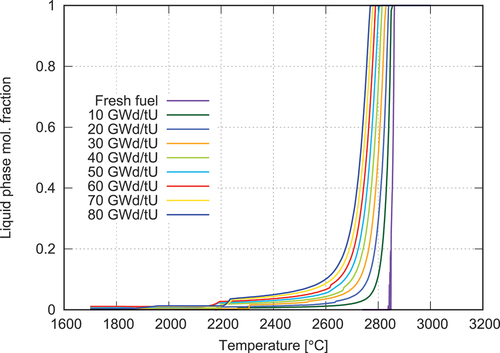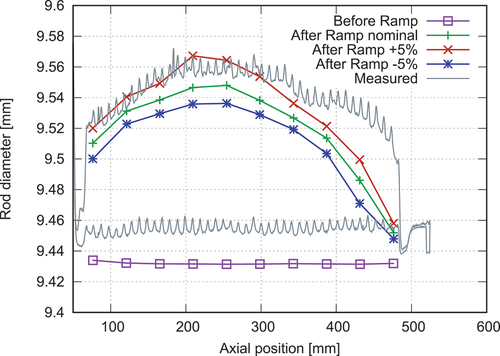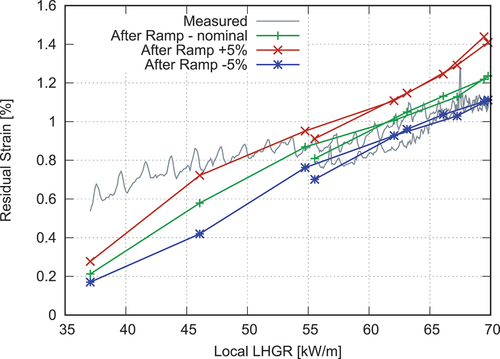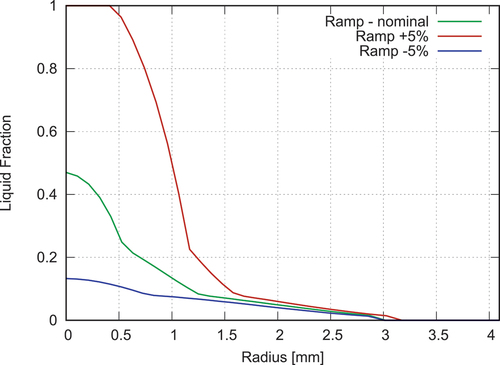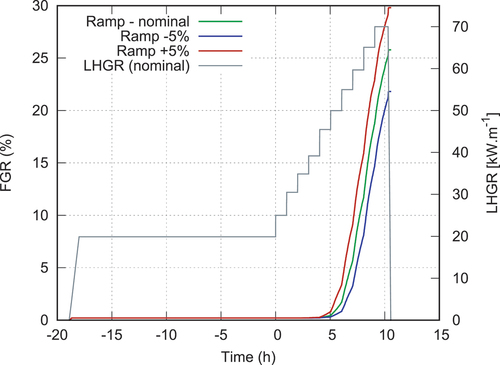Figures & data
TABLE I Main Characteristics of the xM3 Rodlet
Fig. 2. Overview and details of the etched fuel cross section cut near the PPN after the xM3 power ramp.

Fig. 3. Pore fractional area at selected pellet radii.[Citation9]
![Fig. 3. Pore fractional area at selected pellet radii.[Citation9]](/cms/asset/144b8bf0-351d-4892-b2cf-2fa366e1e467/unct_a_2253660_f0003_oc.jpg)
Fig. 4. Grain size determined at selected pellet radii according to the ASTM procedure.[Citation9]
![Fig. 4. Grain size determined at selected pellet radii according to the ASTM procedure.[Citation9]](/cms/asset/818864e7-8f25-4a44-b667-fdf41b61750a/unct_a_2253660_f0004_oc.jpg)
Fig. 5. EPMA radial profiles of Cs and Xe after the xM3 power ramp.[Citation9]
![Fig. 5. EPMA radial profiles of Cs and Xe after the xM3 power ramp.[Citation9]](/cms/asset/7cf0ef6d-b4ce-4918-b7fe-a7aecc991906/unct_a_2253660_f0005_oc.jpg)
Fig. 7. U-O phase diagram calculated with the TAF-ID and OC (adapted from Introni et al.[Citation32]) compared to measurements of the solidus and liquidus temperatures (blue squares) by Manara et al.[Citation31] is the oxygen mole fraction of
.
![Fig. 7. U-O phase diagram calculated with the TAF-ID and OC (adapted from Introni et al.[Citation32]) compared to measurements of the solidus and liquidus temperatures (blue squares) by Manara et al.[Citation31] xO is the oxygen mole fraction of UO2±x.](/cms/asset/068659aa-56c6-4df2-a9ca-c187e1ffd7a1/unct_a_2253660_f0007_oc.jpg)
TABLE II Grouping of Fission Products and Actinides for the Thermodynamic Equilibrium Calculations with OC and the TAF-ID
Fig. 9. Calculated evolution of the phase fractions with temperature in a fuel of average burnup 30 GWd/tU−1: (a) all phases and (b) liquid phases.
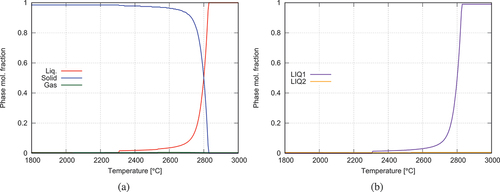
Fig. 10. Elemental composition of the immiscible liquid phases LIQ1 and LIQ2 as a function of temperature in a fuel of average burnup 30 GWd/tU−1.
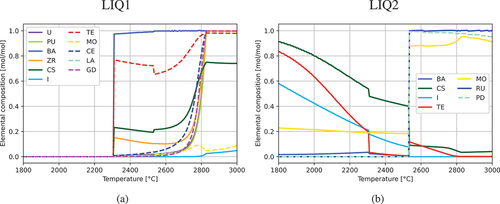
Fig. 11. Comparison of the calculated solid-liquid phase transition for a 30 GWd/tU−1 fuel considering all phases and only the fluorite matrix.
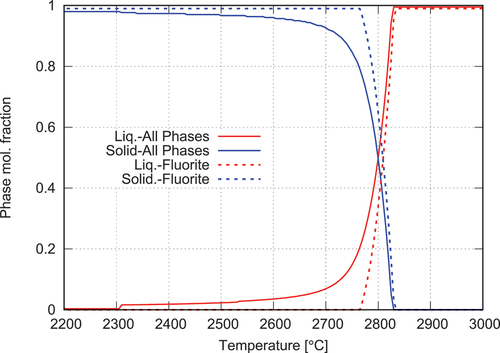
Fig. 12. TAF-ID estimates of the solidus and liquidus
temperatures as a function of the fuel burnup compared to correlations from the open literature.
refers to the melting temperature when the solidus and liquidus temperatures are equal in the correlation.
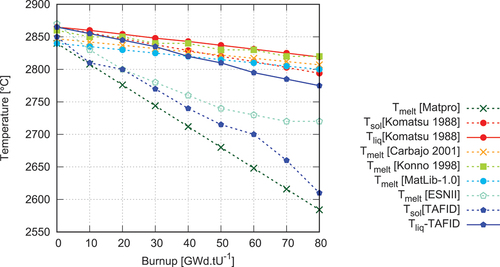
Fig. 13. Model implemented in ALCYONE for the liquid fuel fraction compared to the TAF-ID calculation results for a fuel of average burnup 30 GWd/tU−1.
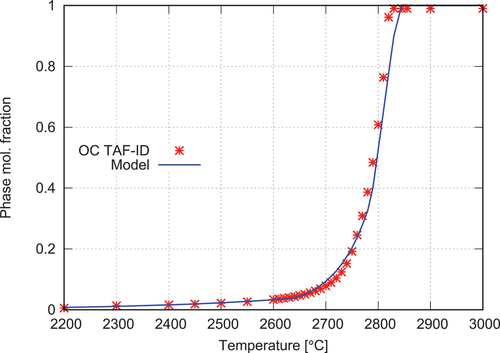
Fig. 14. Model implemented in ALCYONE for the heat capacity compared to the TAF-ID calculation results for a fuel of average burnup 30 GWd/tU−1.
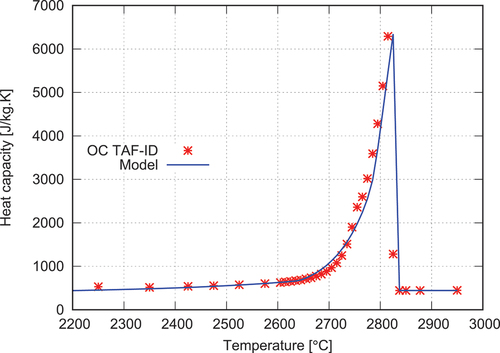
Fig. 15. Evolution of the thermal strain with temperature implemented in ALCYONE for a fuel of average burnup 30 GWd/tU−1.
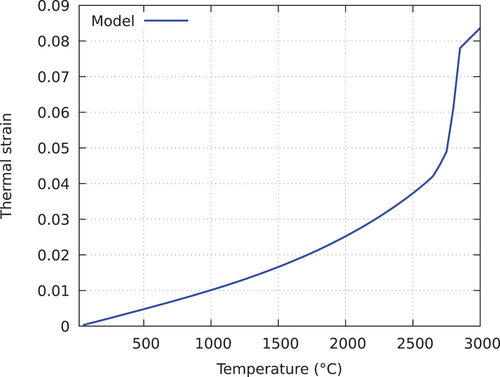
Fig. 18. Comparison of the calculated rod elongation with the experimental measurements performed during the xM3 power ramp.
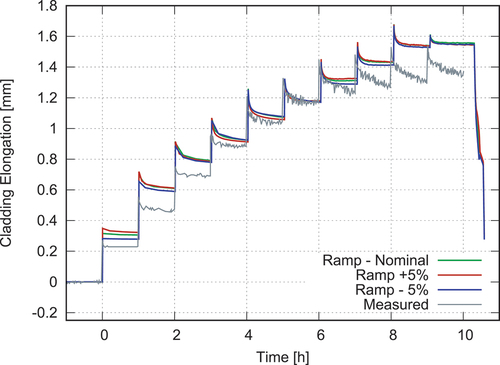
Fig. 19. Calculated radial profiles of temperature at RTL and PPN. The solidus and liquidus temperatures and the 1800°C isotherm are also indicated.

Fig. 21. Calculated axial profiles of the melting fuel radii at RTL, with the measured rod diameter after the power ramp (right y-scale). The radii of the inner porous and pore-free rings are also indicated.
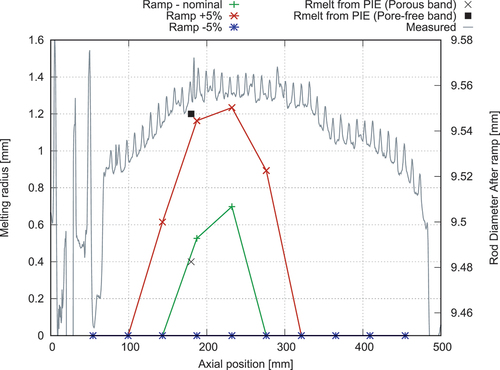
Fig. 22. (a) Calculated axial profiles of the pellet-clad gap at the end of the power ramp compared to the measured cold, residual, and relocated gaps. (b) Calculated axial profiles of the residual pellet diameter compared to the estimates by LOM.
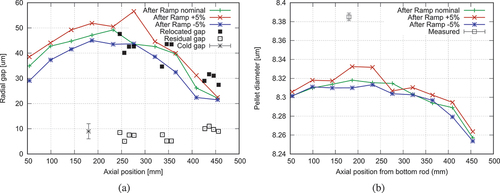
Fig. 23. Calculated radial profiles of Xe at RTL and at PPN. The measured EPMA profile is also indicated.

Fig. 25. Calculated radial profiles of porosity (initial porosity plus fission gas bubbles) at RTL and PPN compared to the measurements.
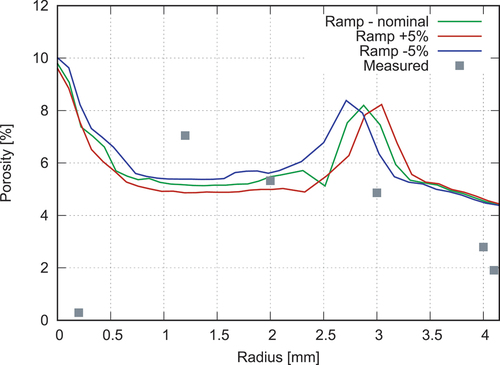
Fig. 26. Radial profile of porosity calculated at the end of the plateau at 70 kW/m considering a 4.7% initial porosity.
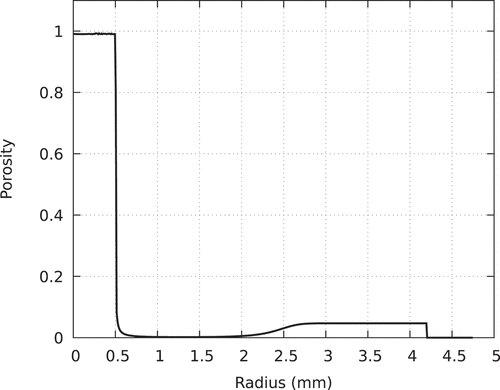
Fig. 27. Calculated evolution of the porosity at the pellet center and at PPN during the xM3 power ramp.
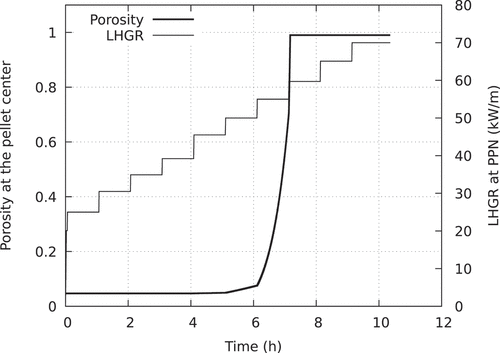
Fig. 28. Calculated evolution of the temperature at the pellet center during the xM3 power ramp with and without coupling with the pore migration mechanism.
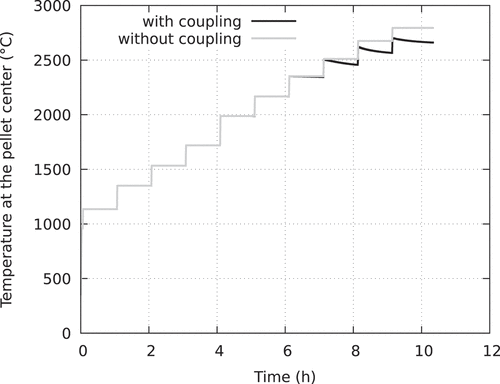
Fig. A.1. (a) Setup for gap measurement and (b) recorded load displacement curves illustrating the principle of the measurement (reproduced from Ref. [Citation9]).
![Fig. A.1. (a) Setup for gap measurement and (b) recorded load displacement curves illustrating the principle of the measurement (reproduced from Ref. [Citation9]).](/cms/asset/b05de528-7b5f-45ec-b72f-4b722b68f93e/unct_a_2253660_f0029_oc.jpg)

